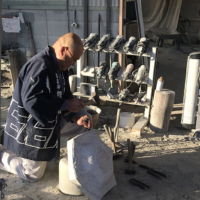Kiyoshi Kurosawa has been an international cult favorite since the release of "Cure," his breakthrough film, in 1997. Telling the strange tale of a blanked-out young man who hypnotizes his victims into killing themselves, "Cure" was utterly unlike anything coming out of Hollywood in its indirection, ambiguity and scares that seemed to ooze up from the collective unconscious rather than spring from behind a door. It also labeled Kurosawa as a J-Horror director, a label that Jerry White, in his pioneering critical study "The Films of Kiyoshi Kurosawa: Master of Fear," admits does not quite fit: "His films," writes White, "are often too complex for the cult fan, yet too mired in genre convention for art-house fans."
White, a regular contributor to the fan magazine "Asian Cult Cinema," tries to explain Kurosawa's complexity and conventions with a refreshing candor, enthusiasm and lack of academic jargon. But in his analyses of 25 feature films, White also frequently slams Kurosawa for cinematic crimes and misdemeanors, including the "completely uninteresting actions" in "Barren Illusion (Oinaru Genei)" in 1999, the "disregard for narrative consistency" in "Seance (Korei)" in 2000, and the "alarming failure of storytelling" in "Loft" in 2007.
Which raises the question of why write a book, as opposed to a journal article, about such a patchy director?


















With your current subscription plan you can comment on stories. However, before writing your first comment, please create a display name in the Profile section of your subscriber account page.